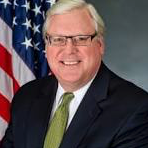
It’s called “Take Back New York” and we began rolling it out in earnest last week with a focus on rising crime and public safety.
But the overall agenda covers many challenges and crises.
From combating crime to job creation to tax relief, one-party control of New York State government has been a disaster for Upstate New York communities, economies, and taxpayers. The Albany Democrat direction for New York is producing billions upon billions of dollars of short- and long-term spending commitments requiring billions upon billions of dollars in new taxes, fees, and borrowing for future generations of state and local taxpayers.
This relentless pursuit of a far-left, extreme-liberal agenda appears to be the priority over a long-term, sustainable future for Upstate, middle-class communities, families, workers, businesses, industries, and taxpayers.
Senate Republican Leader Rob Ortt summarizes our fight this way, “From escalating taxes to blatant pro-criminal policies and extreme government overreach, it’s become harder than ever to live in our communities — something reflected in the growing exodus of our fellow New Yorkers. It’s more vital than ever, for them, that we take back our state from out-of-touch politicians and restore some sanity and common sense to our government. Take Back New York 2022 is the first step in accomplishing that and restoring our reputation as the Empire State.”
The overriding goals of Take Back New York 2022 would:
● Offer a safer and better quality of life for all New Yorkers by repealing bail reform and supporting law enforcement and crime victims, as well as expanding and ensuring access to quality education;
● Make New York more affordable for every resident by cutting the state’s highest-in-the-nation tax burden and enacting a series of measures that lower the cost of living in New York;
● Develop a strong workforce for a strong economy through substantive training and development programs, a major commitment to family farms, and fostering quality and affordable child care for working parents;
● Improve the state’s business climate and expand economic opportunity by cutting burdensome regulations, investing in physical infrastructure and broadband statewide, and moving toward a cleaner energy future;
● Ensure security for our vulnerable populations by securing funding for veterans, providing needed resources to seniors and their caregivers, combating the opioid crisis, and enhancing mental health programs and services; and
● Restore accountability to the state government in the aftermath of disgraced ex-Governor Andrew Cuomo’s rampant abuses of executive power.
As I noted earlier, 2022 represents a pivotal session in so many areas. Last year’s enacted state budget, for example, increased spending by nearly $20 billion – the annual state budget, for the first time in history, now surpasses $200 billion – and raised taxes by more than $4 billion. Governor Kathy Hochul and legislative leaders could be eyeing yet another huge leap in the size of New York’s budget and the scope of what state and local taxpayers must foot the bill for -- including an expanded, potentially $3-billion “Excluded Workers Fund” to provide one-time, taxpayer-financed payments of more than $15,000 to hundreds of thousands of individual illegal immigrants who were excluded from federal COVID-19 assistance because they are in the country illegally.
Later this week, a Farm Wage Board established by former Governor Andrew Cuomo and the Legislature’s Democrat majorities in 2019 will hold final public hearings on whether to lower the current farmworker overtime threshold from 60 hours to 40 hours. It’s a move that risks changing the face and the future of New York State agriculture as we have known it for generations – and it could undermine the strength and vitality of many upstate communities, cultures, and economies for generations to come. Agriculture advocates including the New York Farm Bureau, Northeast Dairy Producers Association and many individual farmers and other farm leaders have undertaken a yearlong campaign against lowering the threshold. I’ve joined many of my Upstate legislative colleagues to express our own opposition and I will be testifying at the Board’s January 20 hearing to once again reinforce what’s at stake for our family farms.
Most reasonable New Yorkers also recognize that rising crime and violence, and weakened public safety and security, are the result of the pro-criminal policies being enacted and pushed by this governor and a State Legislature under one-party Democrat control. They have emboldened the criminal element throughout this state through failed bail reform, lenient parole policies, an out-of-control Parole Board, cowing to the ‘defund the police’ movement, and an overall careless approach to criminal justice.
It has been alarming to district attorneys, law enforcement officers, and criminal justice experts alike, and it shows no signs of letting up. Consequently, last week the Senate and Assembly Republican conferences once again stood with law enforcement to speak out and keep fighting against the pro-criminal mentality and anti-police policies that keep going too far in New York State and making our state, our communities, and our neighborhoods less safe. We are calling for the enactment of legislation that puts crime victims, law enforcement, and safe communities first and begins restoring responsibility, sanity, and common sense to criminal justice and public safety in New York State.
It’s time to take back Upstate’s rightful place and restore a more responsible and reasonable approach to governing – an approach that puts law-abiding citizens and crime victims above criminals and one that looks out for citizens over illegal immigrants.
You can read more about “Take Back New York” on my Senate website, omara.nysenate.gov.
- Read more...
- 3 comments
- 820 views

